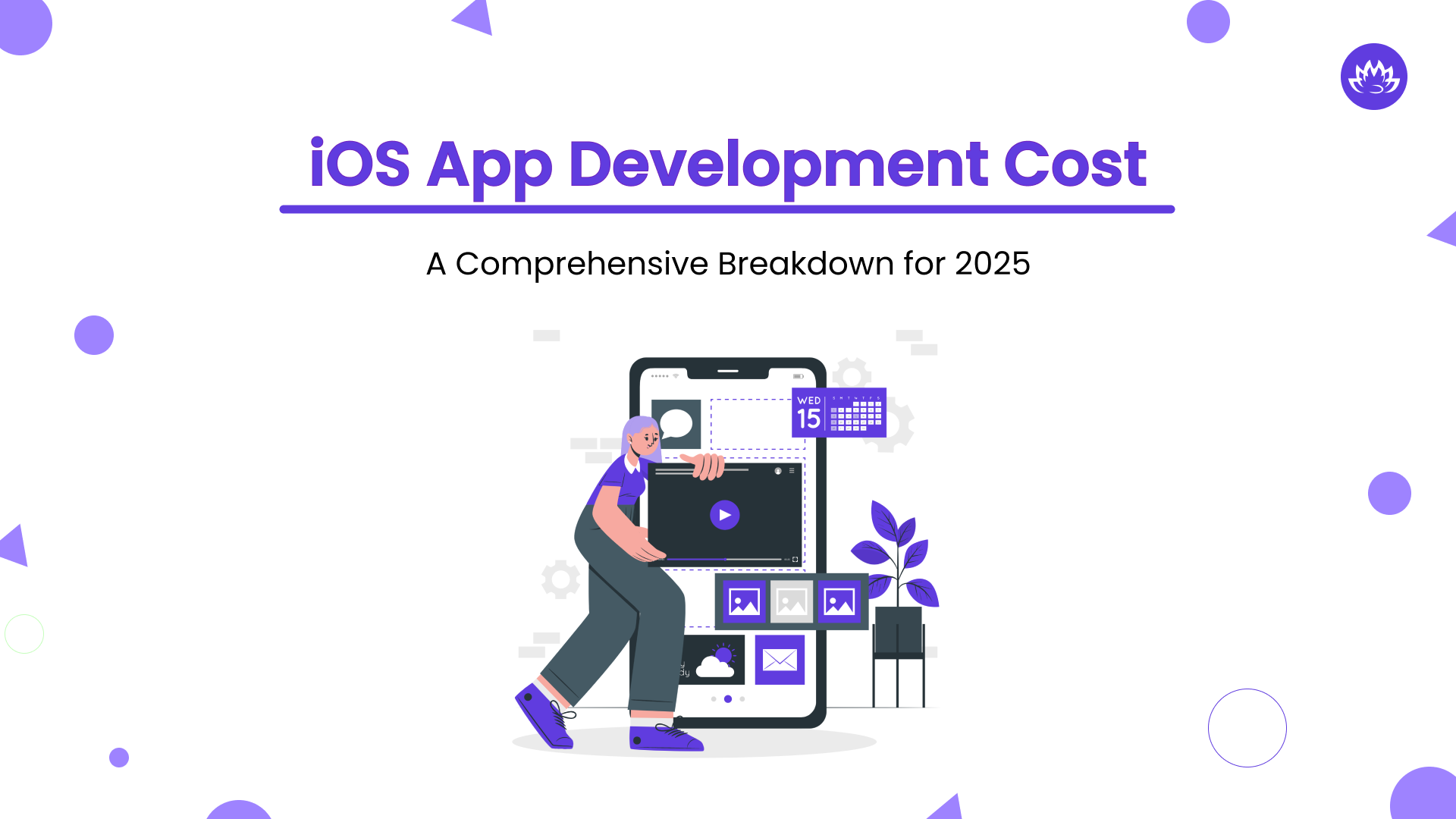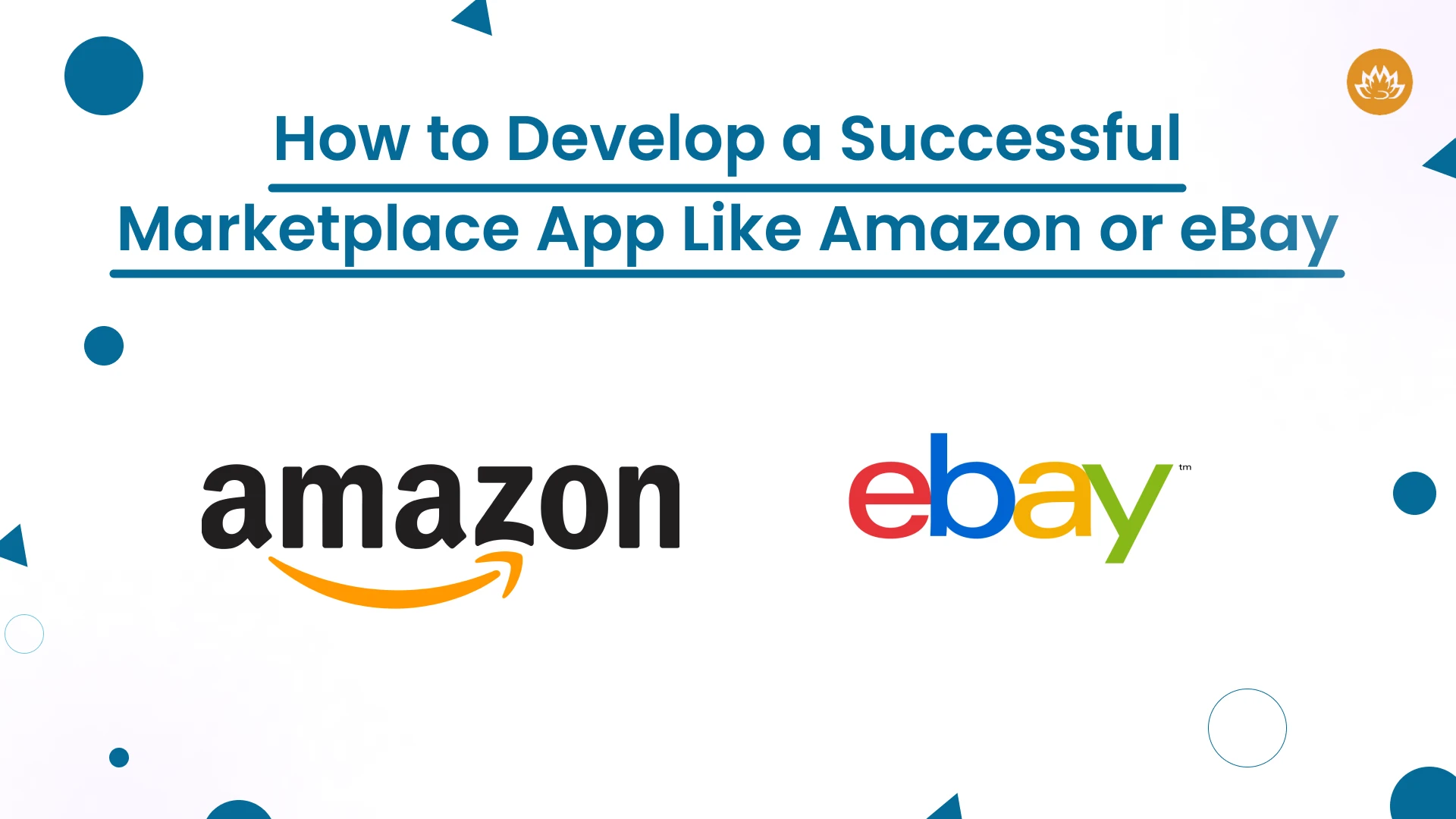It is quite evident that the world has gone mobile, and apps have become a part of our daily life. We live in an era where our smartphones are within reach of our arms every time. Apps for mobile devices have countless possible uses. Mobile Application Development Company has recently viewed a paradigm shift from being a novelty to indispensable for all businesses. Companies now learn the app creation process and leverage these mobile apps for increasing customer interactions within their businesses, identifying opportunities for creating new revenue streams, providing employees with new tools for improving their efficiency, and raising brand awareness.
There are apps for everything from small businesses to fitness apps, e-commerce apps, internal employee communication apps, and more. Mobile app developers can develop apps as the extension of your existing business or can be used to create a new one from scratch. Today’s mobile app solutions can include features like augmented reality, the internet of things, and machine intelligence. Here we have given a step-by-step guide for you to create a successful app.
How to create a mobile app?
There is no definite method for app development. It will depend on your needs, app type, industry, budget, and various other factors. The top mobile app development company lets you build an app for iOS and Android. The time and cost involved in the development of an app are based on various factors such as the kind of app you are making, the development method, and the complexity of the features of the mobile app solutions. Most apps will take around 6-12 months. However, complex functionality might take longer. Do you want to know how much it costs to create an app? You might build an application ranging from $2,000 to $ 2 million. The cost will add as you add more features, complexity, and functionality to the app. Now let’s dive into the steps of successful app development.
- Coming Up with the idea: Before starting your app’s development, you need to ensure that you have a viable app idea. Your app must solve a problem, actually. Also, you need to ensure that someone else is not performing what you wish. Your app idea always needs to be a familiar concept or an invention. It can be an extension of an already existing business. For example, if you are creating an app for an e-commerce website, you may create an app that improves the manner your customers shop from their mobile devices.
- Define your goals: Ultimately, your goals will be establishing the entire process of your app development. If you do not do so, you might get lost. You may set goals relating to your end-user and also goals relating to your business. For example, if you are creating an app for an e-Commerce website, your goal should be reducing the shopping cart abandonment rates on mobile devices.
- Conduct market research: Now, you need to ensure that there is a market need for the app you are developing. If you create an app without doing proper market research, then it might result in a waste of time, resources, and money. Create surveys, run a focus group, conduct interviews, figure out how creating an app can improve customer experience, and research your competitors. If you are building an extension app, you may use your present customers as this research’s resource. But if it’s a new app, you will have to connect with the prospective users who fit your target audience.
- Decide your app features: You need to think about the core functionality of your app. Many people add unnecessary and extra features to an app that can take away from the primary purpose of your app. Every feature add-on adds to the development timeline and cost. Some popular app features include, Customer loyalty, a menu ordering system, e-commerce carts, push notifications, GPS capabilities, a community wall, questionnaires and surveys, booking capabilities, audio, image, and video hubs, etc.
- Create a Wireframe: A wireframe is a crucially rough layout of the mobile app. The purpose of this is to simply illustrate the features of the app and lay out the schemes. Mobile app developers need to plan out the user journey. It will show what the next page looks like or display what will happen when they click on a specific button. In terms of the vision of how your app will function or work, it will help you in getting your team members on the same page.
- Choose your development method: There exist various ways of building an app. But before you get started, you have to determine the method that suits your unique situation. The right method will be based on factors like app type, technical skill level, budget, and time to market.
- Creating an app with Native Development: The native app development comprises low-level coding. If you are not a developer or do not know how to code, you will have to hire specialized mobile app developers to create the app for you. If you plan to launch the app for both Android and iOS, then a developer for each platform will be needed to deploy the native apps on both app stores. Each platform has its own programming language. Also, you will need a full-stack web developer to create your backend infrastructure for the data hosted in the cloud. Learning how to create an app with native development provides you with maximum flexibility. When you code from scratch, then your app is capable of doing anything. It is an ideal option for the one trying to create an augmented reality app or a gaming app.
- Creating an app with Hybrid App Development: Hybrid development is quite a cost-effective alternative to a native route. Most of the hybrid builds depend on JavaScript, a web technology. This coding language will allow you to build an app once and then deploy it on numerous platforms. The flexibility of creating an app with a hybrid method is quite high. It saves money and time, but the quality and performance of your app may suffer as an outcome.
- Creating an app with a RAD (Rapid App Development) App Builder: For non-technical users who wish to build an app of their own, Rapid app development is quite a popular choice. It is cheaper than the previous two, and you can also get to the market faster. You will use one existing tool with RAD to build an app with one online interface. This method limits the developer to whatever tool they use to create the app. You can only use whatever this platform has to provide for functionality. You are configuring the tools in the manner that works best for your app. Remember that it will include limitations.
- Creating an app using the Cookie Cutter App Builder: Here, you will essentially take a single app and then configure it per your needs. You will add personalized text, color schemes, or other app design graphics that align with your branding. This platform makes it simple for you to turn on the functionality that you need and turn the features off that you don’t need. For this development method, there is no requirement for coding. The interface is fairly simple; however, it is not customizable or flexible. Your functionality will be quite limited, particularly if you wish to scale. These are fine for DIYers with merger budgets, hobby apps, or side projects.
- Research existing solutions: In terms of the development of an app, there are services to accomplish the standard functionalities that all app needs. This refers to solutions for things such as push notifications, analytics, design, hosting, and infrastructure. It is always cheaper to purchase something pre-built as opposed to creating it from scratch. Usually, you can make a few custom changes to the existing services. This will save money and time and get the app in the market faster.
- Technical Specification: Take the wireframe mentioned before to create a technical specification. Mobile app developers need to look at the wireframe and then assess the technical challenges. Your tech spec can find alternative ways potentially to achieve your goals. This saves you thousands of dollars and months of work.
- Set Measurable Milestones: During the app-making process, setting milestones will help you, as well as your team, to be on track. Without benchmarks, you won’t have any way to track your progress. The idea is to separate your huge development project into small parts. It is pretty easy to chip away at smaller projects than looking at a huge project from beginning to end. All the small projects must be finished within the specified timeframe. Based on the complexity of the tasks, this may range anywhere from a few days to a few weeks. Your progress can be measured against the timeline of milestones to ensure that you and your development team have hit the deadlines. You need to implement the best project management system for software developers. Scrum and agile development are the two wonderful options you might wish to consider. A way to track your progress will provide you with a better understanding of when you are ready to go to the market with your app. Thus, accordingly, you can plan.
- Create an MVP: The idea behind a Minimum Viable Product (MVP) is that it forces you to think about essential features of your app. This is a vital aspect of your app project when you are on the path to creating a successful app. MVP is the bare bones of your mobile app solutions. Try making an app with only the necessary components. It has the core features to finish the simplest use cases and functionalities and exceeds in terms of performing better than just a test app.
- Quality Assurance: Now, after the MVP is finished, you have to test your app before deployment. You need to test the app on the actual mobile platforms. Make sure that your app works offline, online, and so on. Devices with various screen sizes and software versions may have issues that are not found elsewhere. A quality assurance specialist from the top mobile app development company may visit and find bugs in your app before you market it. If any customer discovers bugs, that will create a problem for the long-term success of your app. You may go through usability testing with the actual test users. User interface and user experience changes can be later configured. Just eliminate all the errors and bugs as of now.
- Deploy: Now it is time to get your app live and in the hands of the actual users. Right now, your primary focus needs to be visibility and uptime. Ensure that for the end users, the app is fully functional. You definitely will not want your servers to crash. To get your mobile app to the market, you have to submit that to various app stores. There are several requirements for Apple App Sores apps and Google Play Store apps. So, you should understand the submission guidelines before you go through the process. The process of deploying your app will depend on the development method that you choose.
Marketing your app
After you have built an app, a lot of work needs to be done. You need to market your apps properly to get some eyeballs on them as well as pique user interest. Begin by driving the visitors to your app. The visitors will become app installs and will become paid members. You must ensure that you have a digital presence on various marketing platforms. Prioritize the stations where your user base spends maximum time. Then promote your app on various social media channels such as Twitter, Instagram, Facebook, and LinkedIn. Create app demonstrations and video promotions. The main idea behind this marketing strategy is to attract new users. So, you need to widen your reach and use a mix of both outbound and inbound marketing strategies. You can focus on App store optimization. Track KPIs and ask for user feedback.
Wrapping Up
Building an app is not always easy. Whether this is your first app or you have built many apps, there is always scope for improvement. It is always great to educate yourself rather than blindly picking a top mobile app development company and hoping for the best. You need to take advantage of the new tools and technology at your disposal. The new version releases of your mobile app must be based on your user feedback. You must always put your app through quality assurance before you release it to the general public. There will always be ongoing maintenance for your app, so it is important that you retain your mobile app developers. You must ensure that the app built by you is compatible with the latest version of the software from Android and Apple.
Author
-

Whitelotus Corporation is a creative digital software, web and top mobile application development company focused on building next generation disruptive digital products.
View all posts











